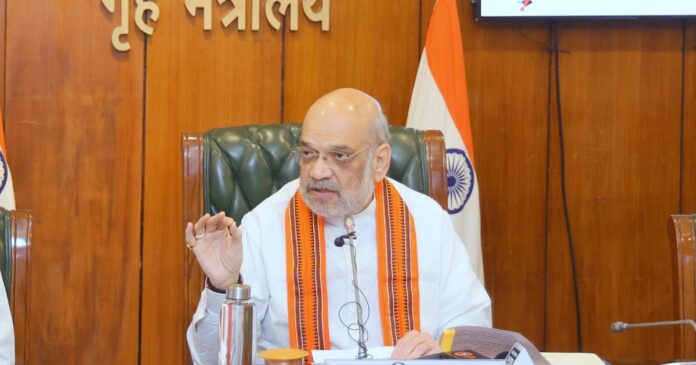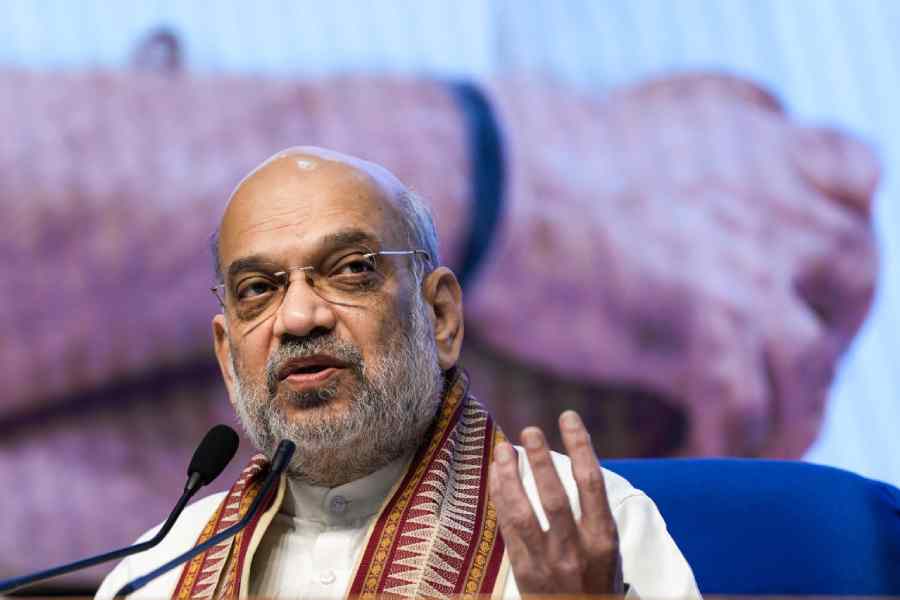Eliminate Naxalism remains the top agenda as Union Home Minister Amit Shah reiterated the Centre’s commitment to completely eradicate Left-Wing Extremism (LWE) from India by March 31, 2026. Addressing families of security personnel and civilians killed in Maoist attacks during his second-day visit to Jagdalpur, Chhattisgarh, Shah assured unwavering government support while honoring the sacrifices of martyrs.
Shah Reassures Families Of Martyrs
Amit Shah met families of fallen security forces and civilians at the Amar Vatika in Jagdalpur, expressing deep condolences and promising continued support. He emphasized that the sacrifices of these martyrs would not be forgotten and vowed that their deaths would not go in vain.
“The pain of losing your loved ones cannot be diminished, but we stand firmly with you,” said Shah while acknowledging their grief.
He commended the BJP-led Chhattisgarh government for their proactive measures in combating Maoist insurgents and honoring the memories of martyrs.

The Government’s Three-Pronged Strategy To Eliminate Naxalism
Shah laid out a three-pronged approach to eradicate Maoist violence from the region:
- Encouraging Surrender: Providing opportunities for Maoist rebels to abandon violence and integrate into society.
- Stringent Arrests: Apprehending individuals involved in acts of violence and insurgency.
- Firm Actions Against Rebels: Ensuring strict action against insurgents who refuse to surrender and continue threatening lives.
“Those who choose the path of violence will be dealt with in their own language,” Shah declared, signaling the Centre’s hardline stance against Maoist insurgency.
Significant Achievements In Combating Naxalism
Amit Shah highlighted the substantial progress achieved in reducing Maoist influence over the past year. He credited the Chhattisgarh government for implementing a well-coordinated strategy that led to the elimination of a large number of Maoist rebels.
This progress marks a turning point in the fight against Left-Wing Extremism, which has plagued parts of central and eastern India for decades. Shah emphasized that the sacred land of Maa Danteshwari would soon be free from Maoist violence.

Strengthening Support For Affected Families
Shah praised initiatives aimed at addressing the concerns of martyrs’ families:
- Dedicating one day per week at the Inspector General of Police (IG) office to hear grievances.
- Expanding this model to district collectors for a more comprehensive support system.
Chhattisgarh Chief Minister Vishnu Deo Sai, present at the event, reassured families of the government’s united efforts in safeguarding their interests. He further announced plans to install statues of fallen soldiers in their native villages as a tribute to their sacrifice.
“Both the central and Chhattisgarh governments are united in safeguarding your interests,” said Sai.
Chhattisgarh: The Bastar Region’s Maoist Challenge
The Bastar region of Chhattisgarh has been the epicenter of Maoist insurgency for decades. This mineral-rich yet underdeveloped region has witnessed intense violence, claiming countless lives, including security forces, civilians, and Maoist rebels.
Key challenges include:
- Geographical Terrain: Dense forests and hilly landscapes provide a safe haven for Maoists.
- Underdevelopment: Lack of infrastructure, education, and employment opportunities fuels resentment and Maoist recruitment.
- Security Risks: Ongoing ambushes and attacks on security forces hinder developmental progress.
Recent Milestones In The Fight Against Maoists
Over the past few years, coordinated efforts by the Centre and the state have yielded significant results:
- Reduction in Maoist-affected districts: Government data shows a sharp decline in areas under Maoist control.
- Improved Intelligence Networks: Enhanced intelligence gathering has enabled precision strikes against insurgents.
- Surrender Policies: Proactive measures encouraging Maoists to surrender have seen positive responses, with many rebels returning to mainstream society.
A Unified Effort To Eliminate Naxalism
The Centre’s renewed commitment to eliminate Naxalism reflects a broader strategy of combining military operations with developmental initiatives. While security forces intensify operations against Maoist strongholds, simultaneous efforts to boost infrastructure, education, and employment aim to address root causes of discontent.
Amit Shah’s declaration underscores the government’s resolve to ensure that no family suffers the loss of a loved one to violence.
“We will eradicate Maoism completely from the sacred land of Maa Danteshwari,” Shah reaffirmed, resonating with the aspirations of millions in the region.
Path Forward For Chhattisgarh
The commitment to eliminate Naxalism by March 31, 2026, serves as a clear roadmap for the future. Success will depend on continued collaboration between the Centre, state government, and local communities. With enhanced security measures and development-driven initiatives, the government aims to restore peace and prosperity in Maoist-affected regions.
As Shah concluded his visit, his message was unequivocal: the government stands firm in its mission to end Maoist violence and create a safer, more prosperous future for the people of Chhattisgarh.


